African Water ferns or Bolbitis Heudelotii are a type of aquatic plant that is native to tropical rainforests. They are characterized by their delicate, feathery leaves and their ability to grow in a variety of conditions. Water ferns are a popular choice for aquariums, as they can help to improve water quality and provide a natural habitat for fish and other aquatic life.
Table of Contents

Quick fact about African Water Fern Plants
| Fact | Details |
| Scientific Name | Bolbitis Heudelotii |
| Common Name | African Water Fern |
| Native Region | Africa and Asia |
| Max Size (Approx) | Up to 18 inches (45 cm) |
| Lighting Requirements | Prefers low to medium light |
| Water Conditions | pH 6.0-7.0, Temperature 68-82 degrees °C |
| Growth Rate | Slow |
| Tank Placement | Attached to Decor |
What is an African Water Fern?
The African Water Fern, scientifically known as Bolbitis Heudelotii, is a captivating addition to any aquarium. Native to the damp, shaded regions of Africa and Asia, this plant thrives in both submerged and semi-aquatic environments.
Its feathery, lace-like leaves create an aesthetic appeal, while its slow growth and adaptability make it a low-maintenance choice for all aquarists. Patience is key with this plant, but over time, it brings a lush, enduring beauty to any aquarium

What About Watering Ferns with Epsom Salt?
Some people recommend watering ferns with Epsom salt, a mineral compound made of magnesium and sulfate. Epsom salt is said to help ferns grow lush and green by providing them with magnesium and sulphate, which are essential nutrients for plant growth.
However, there is no scientific evidence to support the claim that watering ferns with Epsom salt is beneficial. In fact, some experts believe that Epsom salt can actually be harmful to ferns, as it can raise the pH of the water and make it more alkaline.
If you are considering watering your ferns with Epsom salt, it is important to do your research and weigh the risks and benefits. There is no guarantee that Epsom salt will help your ferns grow better, and it may actually do more harm than good.
Here are some of the potential risks of watering ferns with Epsom salt:
- Epsom salt can raise the pH of the water, making it more alkaline. This can stress the plant and make it more susceptible to disease.
- Epsom salt can burn the roots of the plant.
- Epsom salt can make the leaves of the plant yellow.
If you are looking for a way to improve the health of your ferns, there are other, more effective methods. Here are a few tips:
- Provide your ferns with bright, indirect light.
- Fertilize your ferns regularly with a balanced fertilizer.
- Trim your ferns regularly to keep them healthy and prevent them from becoming overgrown.
- Keep the water in your aquarium or pond clean and free of debris.
Vivariums
The African Water Fern, or Bolbitis Heudelotii, is versatile and can thrive in several types of vivariums. Here are some common setups where this fern can be incorporated:
Aquariums: This is perhaps the most common setup for the Ferns. It thrives in both fully submerged and semi-aquatic conditions. Its elegant, feathery fronds create an attractive backdrop and provide excellent cover for fish and invertebrates.
Paludariums: These are setups that combine terrestrial and aquatic elements, usually with part of the tank filled with water and part left dry to mimic a riverside or shoreline. The Water Fern can be situated in the water or on the water line, adding a lush, green aesthetic to the landscape.
Terrariums: Although not as common, the plant can also be grown in high-humidity terrariums, especially those designed to mimic a rainforest environment. Here, the fern can be placed in a shaded area with high humidity, but care should be taken to ensure the soil doesn’t become waterlogged.
Ripariums: Similar to paludariums, ripariums simulate a riverbank environment, but the terrestrial part is much more reduced, almost resembling a marsh. The Fern can be attached to driftwood or rocks placed semi-submerged in the water, where it can grow in and out of the water.
Growing African Water Ferns
Tank Sep up
Setting up a tank for African Water Fern involves a few key steps:
- Choose the Right Tank Consider a medium to large tank as Water Fern can grow up to 18 inches. Make sure it’s watertight and clean.
- Substrate Ferns grow by attaching their rhizomes to objects, so you can opt for a basic gravel or sand substrate. However, if you plan on having other plants that root in the substrate, consider a nutrient-rich aquatic plant substrate.
- Install Lighting Install a low to medium intensity aquarium light. Set it on a timer to mimic natural day-night cycles.
- Set Up Filtration Install an aquarium filter suitable for the size of your tank. This will help maintain water quality by removing excess nutrients and waste.
- Set Up Heating Install a water heater to maintain a consistent water temperature between 68 to 82 degrees Fahrenheit (20 to 28 degrees Celsius).
- Water Conditions Fill the tank with dechlorinated water and use a water testing kit to check the pH level. Aim for slightly acidic to neutral water (pH 6.0 to 7.0).
- Add Décor Add items such as rocks, driftwood, or ornaments for the fern to anchor onto.
Planting African Water Fern
Planting Water Fern i involves a few straightforward steps:
Step 1: Select a Suitable Object
Choose an item for the plant to anchor onto. This could be a piece of driftwood, a rock, or any aquarium-safe decoration.
Step 2: Preparation
Take your Fern plant and gently clean any debris from the rhizomes, being careful not to damage them.
Step 3: Attachmen
Wrap the rhizome of the plant around your chosen object. It’s okay if it doesn’t wrap completely, as it will grow and cover the surface over time.
Step 4: Secure the Plant
Use fishing line or cotton thread to secure the plant to the object. The line or thread should be snug but not overly tight, so as not to damage the plant.
Step 5: Positioning
Place your newly planted plant into the aquarium, ideally in a location with low to medium light.
Step 6: Patience
Wait for the plant to establish itself naturally. It will slowly but surely start to grow and cover the surface of the object, adding a beautiful touch of greenery to your aquarium.
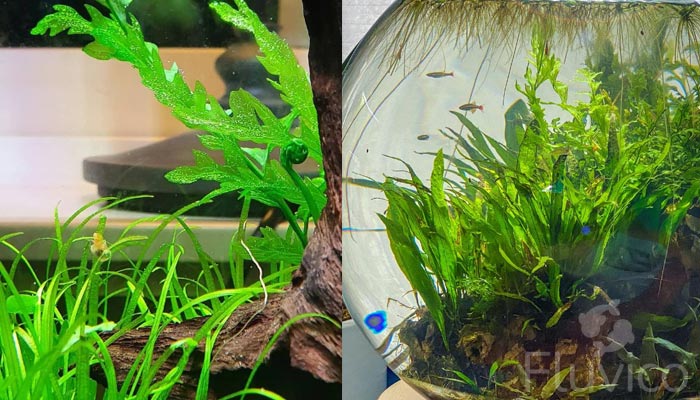
Growth Rate and Height
Bolbitis Heudelotii is a slow grower, which makes it easy to manage in both small and large aquarium settings. While its pace might test your patience, the wait is worth it as it gradually develops into an eye-catching feature in your setup.
In terms of height, it’s no small fry either. With optimal care and conditions, this fern can reach a height of up to 18 inches. Remember, steady growth means a healthier plant, so sit back and enjoy the gradual unfurling of each new leaf.
Co2 Requirement
Water Ferns can thrive without additional CO2 supplementation. It’s quite adaptable and capable of growing in a variety of conditions, including tanks with low CO2 levels.
However, if you’re aiming for a denser, more lush growth or have a densely planted tank, supplemental CO2 can be beneficial. It can boost the plant’s growth and help it reach its full potential faster.
While CO2 supplementation can enhance the fern’s growth, it’s not a strict necessity. Consistently monitoring and maintaining other factors like lighting, temperature, and water pH also play significant roles in the plant’s overall health and growth.
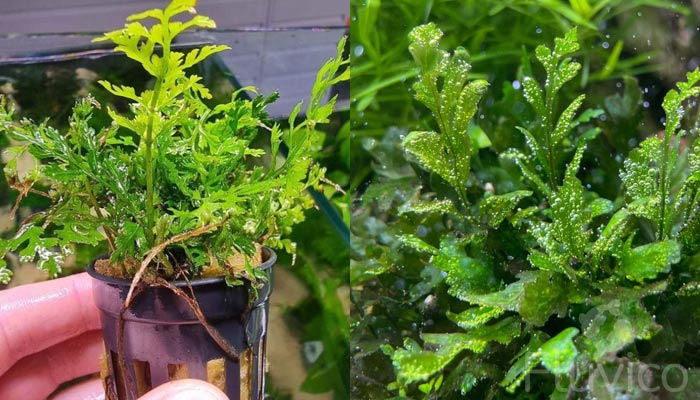
How to Trim
- Identify: Start by identifying the parts of the fern that need trimming. Look for leaves that are yellowing, brown, or show signs of disease.
- Prepare: Equip yourself with a sharp pair of aquascaping scissors to ensure clean cuts and minimal damage to the plant.
- Cut: Trim away the affected leaves at the base, near the rhizome. Be careful not to damage the rhizome or healthy leaves.
- Remove: After trimming, remove the cut leaves from the water immediately. Decaying plant material can lead to poor water conditions.
- Monitor: Observe the fern after trimming. It should start growing new leaves from the rhizome.
African Water Ferns the Right Way: Some Best Practices
Watering ferns, especially water ferns like Bolbitis Heudelotii, deviates from typical houseplant watering. Rather than direct watering, they thrive in specific aquatic environments. Here are some best practices to ensure your ferns are watered the right way:
- Cleanliness: Regularly change a portion of the water in your tank, depending on its size and fauna. This helps maintain a clean environment and reduces the chances of disease and algae growth.
- Fertilizer: Although not a must, you can consider using a water-soluble fertilizer. However, be careful with the amount, as too much can lead to excessive algae growth.
- No Overcrowding: Ensure your ferns have enough space to grow. Overcrowding can hinder growth and lead to competition for resources.

Tank Mates
African Water Fern, is a peaceful plant that generally pairs well with a variety of tank mates. Here are a few suggestions:
Fish: Due to its sturdy structure, the fern can handle various species of fish. Smaller fish like tetras, guppies, or rasboras will appreciate the cover the fern provides. Larger, peaceful fish, such as angelfish or discus, can also share a tank with this fern. However, avoid housing the fern with plant-eating fish or those known for uprooting plants.
Shrimp and Snails: These invertebrates make excellent tank mates for the African Water Fern. They help clean the tank by consuming algae and leftover food, contributing to a healthier environment for your fern.
Other Plants: Ferns gets along well with other aquatic plants. It can create a pleasing backdrop for foreground plants like Anubias or Java Moss.
FAQ
Is Water Fern Easy to Grow?
Yes, Bolbitis Heudelotii is relatively easy to grow. It’s a resilient plant that adapts well to various conditions, making it a great choice for beginners. Despite its slow growth, with consistent care, it flourishes into a beautiful aquatic fern.
Can Water Fern grow emersed?
While Bolbitis Heudelotii thrives when fully or semi-submerged, it can also grow emersed in humid conditions. However, the transition from submerged to emersed growth should be gradual to prevent the plant from experiencing shock.
Is Water Fern an invasive species?
Yes, African water fern is an invasive species. It is a fast-growing, free-floating fern that can form dense mats on the surface of water. This can block sunlight, reduce oxygen levels, and outcompete native plants.
What are the negative effects of Water Ferns?
While water ferns like Bolbitis Heudelotii are generally beneficial in aquariums, they can potentially cause issues if not properly managed. Overgrowth can obstruct light to other plants, and decayed fern matter can negatively impact water quality if not promptly removed.
More Reading

15 Types of Cryptocoryne: Which is Best For Your Aquarium Setup?

16 Awesome Low Light Aquarium Plants (Mosses, Ferns & Stem Plants)


18 Types of Aquarium Moss: Photos, Care, Propagation & Growth Guide
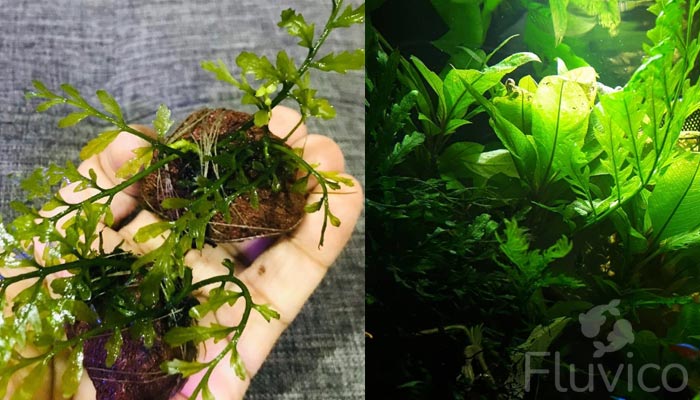
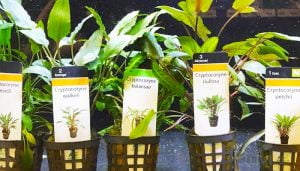
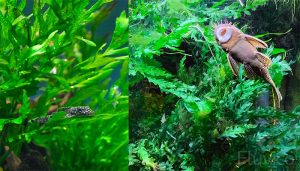
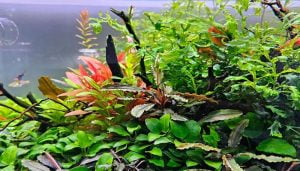

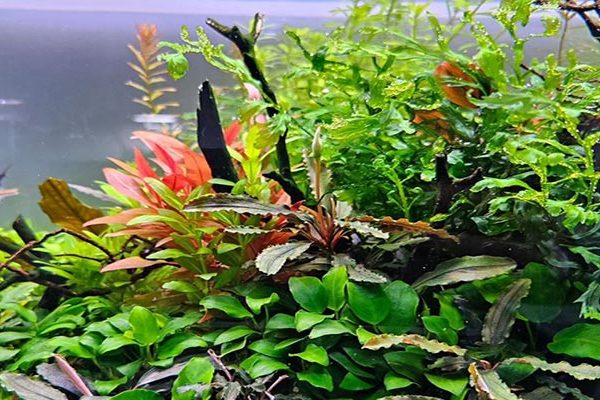
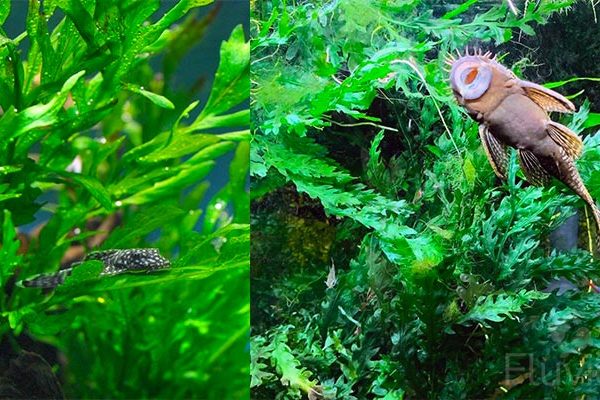
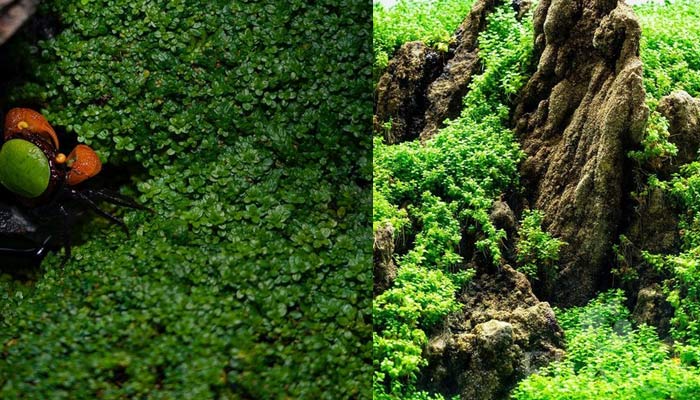
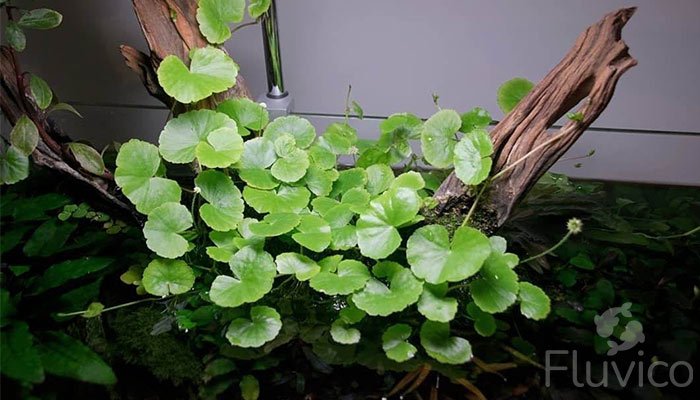
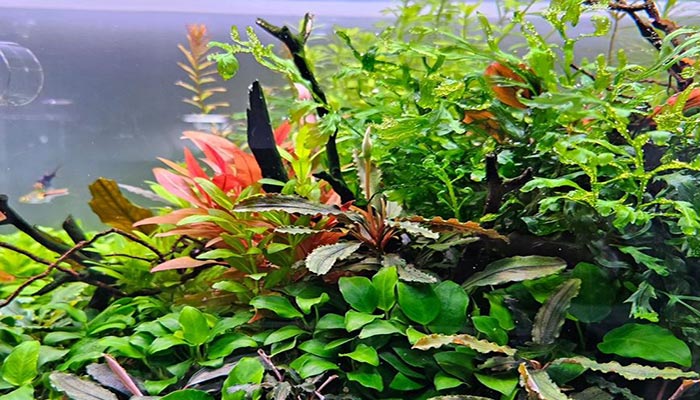
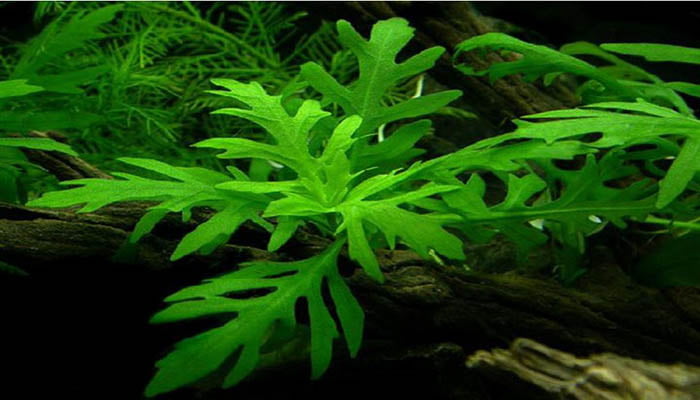
Hope you enjoyed our African water fern care guide
If you have any questions? Ask away, we’re here to help!
All the best,
Daniel